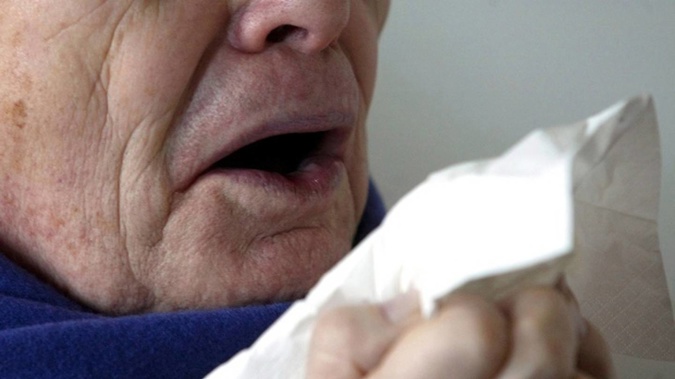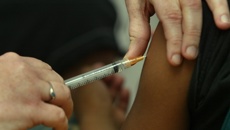
New Zealand is in for another large and early flu season, with virologists already tracking fast-rising rates – and the return of long-absent strains known to hit children hardest.
Ahead of the season, virologists had been warning of another bumper year for influenza, with an earlier peak – as seen in 2022′s “twindemic” - on the back of re-introduced strains and more international arrivals seeding cases.
Those predictions now appeared to be confirmed, ESR’s Dr Sue Huang said, with reported flu cases more than doubling over the space of the last month – and rising fast.
The agency’s latest lab-based virology report also showed that, of 1240 cases of influenza specimens received since the start of the year, more than 260 were influenza B strains, which have been circulating in the Northern Hemisphere and often affected younger and school-aged children.
Surveillance had picked up few of these B strains last season, when the flu swept back in force to make for the biggest surge in a decade – and there was concern their return could help fuel another major wave in 2023.
Similarly, there’d been little H1N1 “swine flu” in the mix last season, yet 226 specimens of the strain had already been processed in ESR and hospital laboratories this year.
Another 716 cases of influenza A – a group including H1N1 – hadn’t been typed.
“H1N1 and flu B are the two viruses we really haven’t seen for more than three years,” Huang said.
“We last had an H1N1 outbreak back in 2018, while flu B was co-circulating here in 2019.”
Because of the “immunity gap” that came with New Zealand’s flu-squashing pandemic measures, Huang said large sections of the population would be susceptible to the two returning strains.
“As we’re seeing more of these [strains] travelling down to New Zealand, and because we no longer have closed borders, this partly explains why we’re seeing this flu activity.”
Huang said it wasn’t yet clear when the season would likely peak – or just how large that peak would be – but she nonetheless expected “substantial” numbers in 2023.
“It won’t be like those pre-pandemic years when levels were very low,” she said.
“At the moment, the trend is moving upward and that will probably continue... so we’ll have to keep monitoring the situation.”
/cloudfront-ap-southeast-2.images.arcpublishing.com/nzme/KP24RLKO4RAQZDCO3W6XHDNZNQ.jpg) ESR virologist Dr Sue Huang. Photo / Mark Mitchell
ESR virologist Dr Sue Huang. Photo / Mark Mitchell
She again expected it would be children mainly spreading flu in communities, while severe cases turning up at hospitals would come in the familiar “U shape” of the very young and old.
Te Whatu Ora-Health New Zealand has prepared a range of measures to ease pressure on hospitals, such as telehealth services, ensuring patients can recover at home and a new programme to spread resources more widely across the health system.
While GPs weren’t yet seeing winter-level surges of flu cases coming through their doors, clinics were anticipating numbers to build up, said the Royal NZ College of General Practitioners’ medical director Dr Luke Bradford.
“We tend to follow the Northern Hemisphere, which certainly had another bad year for flu, and I know that numbers are climbing in Australia, too.”
The Tauranga-based GP said flu remained “a nasty bug” and that people should seek care if they were feeling particularly unwell.
Of some 1650 other respiratory infections logged by the lab-based surveillance so far in 2023, 616 cases had been rhinovirus – the main cause of the common cold – and more than 500 had been respiratory syncytial virus (RSV), which drove an epidemic among Kiwi children in 2021.
Just 29 cases happened to be Sars-CoV-2, despite Covid-19 cases continuing to be reported in their thousands each day – and the latest FluTracking data indicating current rates to be far higher than influenza.
“Covid is just going to be one of those respiratory viruses that will be worse in winter as it becomes more seasonal,” Otago University virologist Dr Jemma Geoghegan told the Herald last week.
In a normal year, the flu infects around one in four Kiwis and kills perhaps 500 – making it hitherto our single deadliest infectious disease before Covid-19.
While Covid-19 could ultimately claim 1000 lives this year, it’s hoped that widespread exposure to Omicron will mean coming waves won’t be as severe as 2022′s giant surges.
Fortunately, Huang said this year’s flu quadrivalent vaccine covered specific H1N1 and B strains that had been circulating globally.
It was freely available to children aged six months to 12 years; those older than 65; Māori and Pacific people aged over 55; and those with underlying health conditions or significant mental illness.
Similarly, the updated bivalent Covid-19 booster, now available to all Kiwis over 30, worked more effectively against Omicron strains, including the currently-dominant XBB.
“To avoid spreading the flu, people should always stay home if they’re sick and not go to work – Covid-19 has taught us these lessons.”
Study points to poor air quality in ECE centres
Meanwhile, public health experts have urgently called for CO2 monitors to be freely supplied to all early childhood education centres ahead of winter, on the back of some troubling study findings.
ECE centres are well-known hot-spots for bugs and respiratory infections to spread over winter – and an estimated 84 per cent of 4-year-olds in New Zealand are currently in some sort of formal care.
Yet there’s been relatively little research into the air quality within these environments, despite ventilation being critical for reducing the risk of infections like influenza and Covid-19.
In a recent study, medical students used Aranet4 monitors to measure air quality within a sample of six ECE centres in Taranaki, finding that CO2 levels were higher than 1500 parts per million (ppm) at four of them.
Good ventilation was defined as being less than 800ppm of CO2.
The study found four out of seven sleep rooms, three out of five smaller activity rooms and two out of five larger activity rooms reached levels of CO2 more than 1500ppm.
The number of children per room with CO2 levels above 1500ppm varied from five to 15 children in the sleep rooms, 10 to 20 children in the smaller activity rooms and 10 to 25 children in the larger activity rooms.
Two out of the four sleep rooms with high CO2 levels didn’t have windows able to be opened, although the rest either had windows or sliding doors.
/cloudfront-ap-southeast-2.images.arcpublishing.com/nzme/TQPI4YUSNZGFDLQT2FV2RQLJAQ.jpg) ECE centres are well-known hot spots for bugs and respiratory infections to spread over winter – and an estimated 84 per cent of 4-year-olds in New Zealand are currently in some sort of formal care. Photo / 123RF
ECE centres are well-known hot spots for bugs and respiratory infections to spread over winter – and an estimated 84 per cent of 4-year-olds in New Zealand are currently in some sort of formal care. Photo / 123RF
Public health physician Dr Jonathan Jarman said the study likely pointed to a wider problem of poor ventilation across the country’s ECE centres – particularly in colder regions.
“People are reluctant to open windows when it is cold. Many do not realise that heat pumps only recirculate air and do not bring in fresh air from outside.”
As CO2 monitoring made an “invisible problem visible”, Jarman and fellow health researchers have recommended the Ministry of Education (MoE) roll out monitors to all centres before winter, just as they were provided to state and state-integrated schools last year.
“Understandably we have become fixated on Covid over the last three years but there are also all the other respiratory viruses that cause illness in children,” he said.
“And it is not just the kids that get sick. They take the bugs home and give them to the rest of their family and to the grandparents.
“Measuring CO2 and improving ventilation should become routine for all ECEs, as well as all the other things they do to protect the health of their children.”
The ministry had already taken some steps to address the problem.
MoE’s acting operations and integrations leader Karen Walfisch said licensing criteria for centre-based services required ventilation – natural or mechanical – that allowed fresh air to circulate, particularly in sanitary and sleep areas.
The ministry also published ventilation guidance for schools and centres, she said, and last year provided funding for around 1700 centres to help purchase portable Aranet4 CO2 monitors.
“Early childhood services and other education providers are also able to purchase additional CO2 monitors and air purifiers at a discounted price directly from the ministry’s supplier.”
Take your Radio, Podcasts and Music with you









